|
Extraction:
making red wines
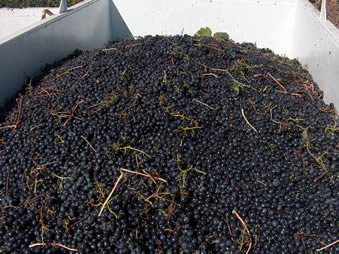 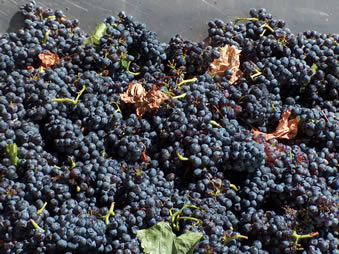
Machine harvested Merlot (left) and hand-picked Pinot Noir (right)
One of the key issues in red wine making is getting the
flavour and colour out of the skins. It’s called extraction, and how
you do it is a vitally important factor in the quality of your wines.
Here’s a brief illustrated explanation of this important subject.
The pulp of almost all wine grapes is colourless (the
exception here being the rare teinturier grapes, such as Alicante
Bouschet and Sousão, which have coloured insides). The skins,
however, are richly pigmented, containing a range of compounds such as
anthocyanins and tannins that are important contributors to the colour
and structure of red wines.
There are many different ways of making red wine, but a
common theme to all is the goal of extracting these colour and flavour
components from the skins without extracting too much: a common
analogy used here is making a brew, where the goal is to take out just
enough flavour from the tea leaves, but not letting it stew too long.
This extraction occurs via a process of maceration, which really is a
bit like brewing a cup of tea.
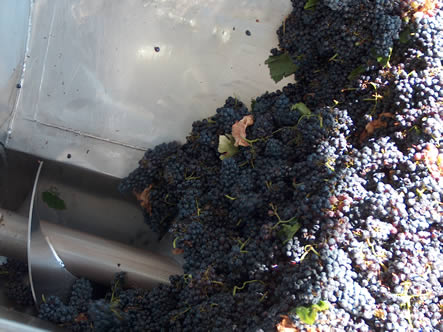 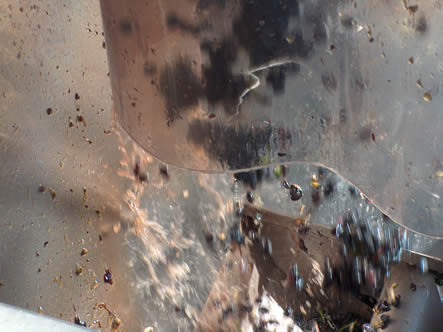
Pinot Noir grapes entering and
leaving a crusher-destemmer
Most red wine making begins with the crushing and
destemming of the grapes, which results in a liquid mass, on which
floats a raft of skins and pips. One variant on this theme is to
include the stems in the fermentation, which can add a lovely spicy,
structural element—it’s most commonly used with some Burgundies.
But if this is done, the stems need to be ‘ripe’, or else they
will make the wine taste green and bitter. Another variant is to leave
the bunches uncrushed, and let fermentation begin from inside the
grapes: this is called carbonic maceration. But most of the time red
wine fermentation will begin with this semi-liquid mass of seeds,
skins, pulp and juice.
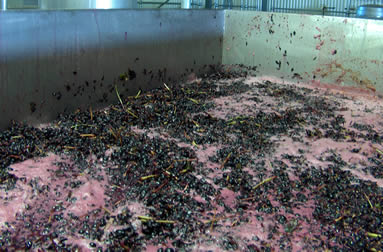 |
Left alone, the skins would form a solid cap on the top
of the juice. Bacteria would begin to ferment at the cap–air
interface, and the result would be a volatile acidity problem—the
wine would reek of vinegar, and be spoiled. Winemakers avoid this by
keeping the cap moist, either by plunging it regularly, or keeping it
submerged by a mechanical device, or by pumping juice over it.
Plunging, also known as pigeage, is the most
traditional method, and can be done by machine, or by a special pole,
or even by feet. This is typically done with shallow open-top
fermenters. Pumping over is potentially more disruptive, because of
the forces involved, but is more appropriate for bigger, closed
fermentation vessels such as stainless steel tanks. Plunging or
pumping over achieve the dual goal of both keeping the cap wet
(preventing it going volatile) and extracting colour and tannin.
|
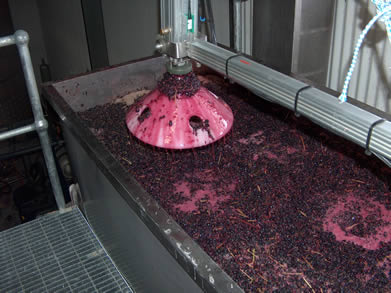 |
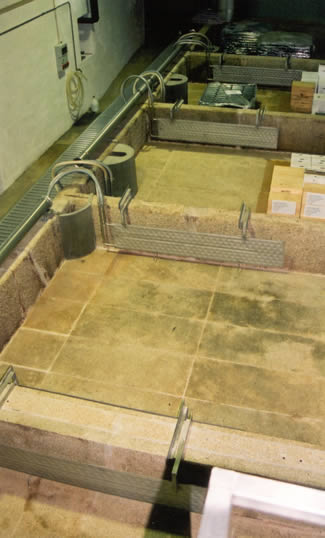 |
Three types of
fermenter. On the left we have a lagar (this is a swanky one
with a heat exchanger), ideal for shallow fermentation with good
contact between the juice and skins. Traditionally, these are
foot-trodden, and this one hails from Portugal's Douro. Below we
have a row of open-top fermenters, which are quite small and
ideal for processing high-quality red wines (again, this is from
a winery in Portugal, this time the Alentejo). Then below left
there is a rotary fermenter of the type popular in Australia. |
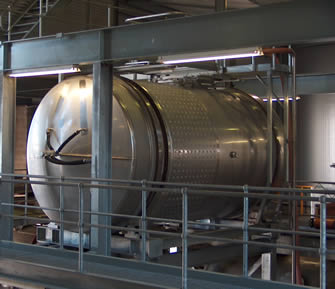 |
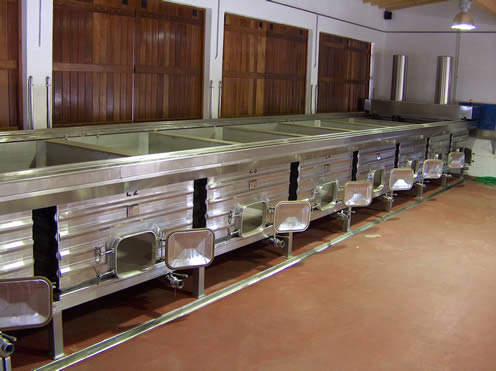 |
A slightly controversial technique is to use rotary
fermenters, which have agitators in them that mix up the cap and juice
when the whole tank is rotated mechanically. These have been accused
of producing wines that have a slight bitterness to them; advocates
suggest that this is because not enough oxygen has been provided to
the fermenting juice and the bitterness is a problem of
‘reduction’.
Extraction of the good stuff from the skins of red
grapes can occur before fermentation, during it, or after it. If the
must and skins are kept cool enough, fermentation will be delayed, and
maceration will occur in an aqueous medium. Once fermentation begins,
alcohol levels gradually rise, and this alcohol aids extraction. After
fermentation has stopped, the maceration that occurs is carried out in
an alcoholic medium, and may be more severe, taking lots of stuff out
of the skins, than that which occurs before fermentation. A key
winemaking decision is when to separate wine and skins after
fermentation has finished.
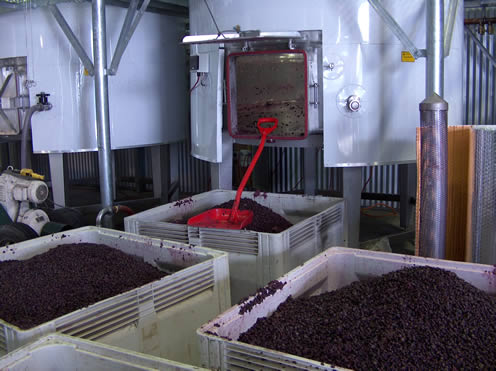
Red grapes removed from fermenters,
ready for pressing
This is the point where pressing occurs. After the wine
has been run off from the skins, the winemaker is left with a pulp
that is a mix of juice, skins and pips. This gets put into a press,
which squeezes out the remaining juice from the skins. How this is
done – the force that is used and the type of press – determines
the quality of the wine that is thus extracted, known as the
pressings. These may be finished off separately from the rest of the
wine, or blended back into it. Press too hard and you end up
extracting bitter compounds from the skins and seeds that can have an
adverse effect on quality.
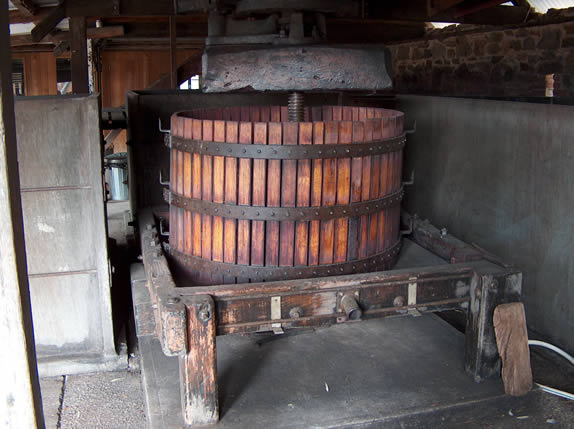
A traditional basket press of the type favoured for red wines
There's
a further issue here, which is that of colour. It's a bit complicated,
but it is important. The main colour pigments in the skins of red
wines are called anthocyanins: they are responsible for the very vivid
colour of just-fermented red wines. However, they aren't very stable. To form stable pigments a variety of chemical
reactions need to occur resulting in the formation of pigmented
polymers. This series of reactions is only just being worked out, but
the story emerging is that the presence of oxygen and the use of oak
could be important here.
Back to top
|